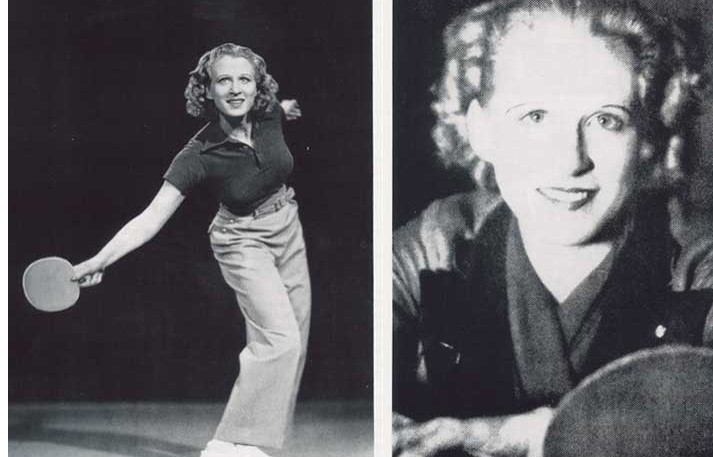"I do not pretend to understand the moral universe; the arc is a long one, my eye reaches but little ways; I cannot calculate the curve and complete the figure by the experience of sight; I can divine it by conscience. And from what I see I am sure it bends towards justice." These words by 19th-century theologian Theodore Parker have inspired many leaders fighting for change over the generations, notably Dr. Martin Luther King, Jr. and President Barack Obama. A girl from New York named Ruth Aarons may also have found some comfort in those words, especially after being the victim of injustice herself. The 15-year-old Aarons discovered table tennis the way table tennis itself was invented: as a rainy day alternative to lawn tennis. To say she was a quick study would be a gross understatement. In a trajectory which seems impossible nowadays, she found herself playing for the world championship in Czechoslovakia a scant three years later. Then, a subplot developed. The other finalist was Astrid Krebsbach, competing under the flag of Nazi Germany. After Aarons won the title, she refused to shake Krebsbach's hand, explaining, "I am Jewish." The following year, Aarons returned to Europe to defend her title. She was the prohibitive favorite to win back-to-back titles when she signed up for the tournament in Baden bei Wien, Austria. There, she met the host nation's Gertrude Pritzi in the final. According to USA Table Tennis historian Steve Isaacson, "There was absolutely no chance that she would lose to Trudi Pritzi in the 1937 Final." As it turned out, they both lost. With the match still in progress, the Austrian officials declared that some undisclosed "time limit" had been violated, thus disqualifying both players and leaving the title vacant. Austria at the time was already within the expanding sphere of Nazi power. It is impossible to prove that the Austrian tournament officials were motivated by antisemitism, but it certainly warrants consideration. Quite understandably frustrated, Aarons, America's only world champion in singles to this day, retired from the sport. She went on to work as a vaudeville performer before transitioning into entertainment management. Sadly, Aarons succumbed to drug addiction and died in 1980. In 2001, Isaacson and fellow USATT historian Tim Boggan campaigned to right this historical wrong. Ultimately, the International Table Tennis Federation agreed to declare Ruth Aaron and Trudi Pritzi co-champions of 1937, thus recognizing Aarons for the exceedingly rare feat of winning back-to-back world championships. While it was too late for Aarons to receive the recognition she so richly deserved, this small symbolic gesture offers hope that justice can be served, even if it is running late.
More at Butterfly Online
